
Бази даних
Наукова періодика України - результати пошуку
 |
Для швидкої роботи та реалізації всіх функціональних можливостей пошукової системи використовуйте браузер "Mozilla Firefox" |
|
|
Повнотекстовий пошук
| Знайдено в інших БД: | Реферативна база даних (7) |
Список видань за алфавітом назв: Авторський покажчик Покажчик назв публікацій  |
Пошуковий запит: (<.>A=Lyeonov S$<.>) | |||
|
Загальна кількість знайдених документів : 12 Представлено документи з 1 до 12 |
|||
| 1. | 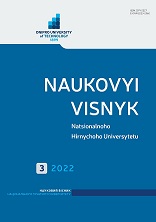
Lyeonov S. V. Macroeconomic stability evaluation in countries of lower-middle income economies [Електронний ресурс] / S. V. Lyeonov, T. A. Vasylieva, O. V. Lyulyov // Науковий вісник Національного гірничого університету. - 2018. - № 1. - С. 138-146. - Режим доступу: http://nbuv.gov.ua/UJRN/Nvngu_2018_1_21 Purpose. Developing methods to evaluate macroeconomic stability of countries with lower-middle income economies. The results of analysis will help to make conclusions concerning regulatory economic policy in the given countries to their macroeconomic dynamics level. Methodology. While investigating macroeconomic stability, the conception of macroeconomic stability pentagon was used which is based on evaluation of five basic macroeconomic indexes: level of GDP growth; unemployment rate; inflation rate; budget balance of the state to GDP; balance of the current turnovers size to GDP. The applied methodic tools are modification of methods, suggested by Professor of Economics Grzegorz W. Kolodko, Dr. Constantin Zaman, and Branko Drcelic. It is completed with the authors' ideas to consider break of the standard fluctuations, asymmetry and extreme deviations as dynamic indicators of the economic agents' response to the positive or negative impacts of the macroeconomic destabilization. Findings. The results of macroeconomic stability pentagons empiric analysis for countries with the lower-middle income economies at different stages of the economic cycle (precrisis period (2000 - 2006), crisis period (2007 - 2010) and postcrisis period (2011 - 2015)) proved the lack of coordination in different economic policies of every studied state. The statistic indicator of the macroeconomic stability is calculated. It is suggested to calculate its dynamic indicator, which differs from statistic one by considering standard fluctuations, asymmetry and extreme deviations of its subindices. It lets to define low syncronization of the analyzed countries' policies, which have to provide the main five directions of the macroeconomic stability. Originality. The authors propose to calculate the dynamic indicator together with statistic indicator of the macroeconomic stability, that allows: taking into account negative tendencies, which can be leveled owing to stabilization of all other subindices; analyzing behavior of the economic agents as a response to positive or negative impacts; considering the character of distinguishing subindices of the macroeconomic stability integral indicator. Practical value. The obtained results will allow evaluating the rate of coordination of separate components of the economic policy in the studied states with the purpose of achieving macroeconomic stabilization. It is a ground to investigate scripts to achieve macroeconomic stability taking into account an optimal rate of the main subindices of macroeconomic stability integral indicator, minimization of the standard fluctuations break, asymmetry of extreme deviations. | ||
| 2. | 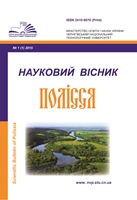
Lyeonov S. V. The measurement of influence of innovations’ implementation on the commercial banks performance [Електронний ресурс] / S. V. Lyeonov, Y. V. Samusevych, I. M. Demkiv // Науковий вісник Полісся. - 2018. - № 1(2). - С. 68-76. - Режим доступу: http://nbuv.gov.ua/UJRN/nvp_2018_1(2)__13 Здійснено класифікацію банківських інновацій на три типи: інноваційні продукти, інновації в обслуговуванні та організаційні інновації. За допомогою інструментарію панельного регресійного моделювання оцінено загальний вплив банківських інновацій та інновацій різних типів на рентабельність активів, приріст активів, приріст кредитів та заборгованості клієнтів, приріст коштів клієнтів, приріст процент-них доходів 9 комерційних банків України. Визначено вплив банківських інновацій на результати діяльності банків з урахуванням часового лагу від одного до п'яти років. | ||
| 3. | 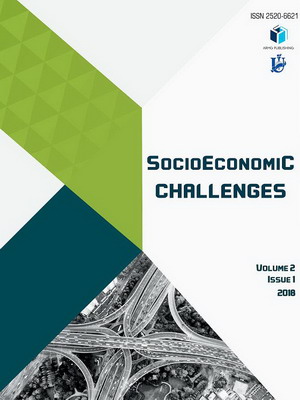
Vasilyeva T. Forecasting Supply and Demand In the Regional Labor Market: In Search of Optimal Proportions of Financing Vocational Education Institutions In the Region [Електронний ресурс] / T. Vasilyeva, S. Lyeonov, L. Lopa // SocioEconomic Challenges. - 2018. - Vol. 2, Iss. 1. - С. 69-84. - Режим доступу: http://nbuv.gov.ua/UJRN/seconch_2018_2_1_9 | ||
| 4. | 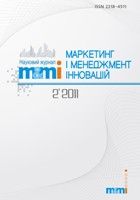
Vorontsova A. Innovations in the financing of lifelong learning system: expenditure optimization model [Електронний ресурс] / A. Vorontsova, S. Lyeonov, S. Vasylieva, A. Artyukhov // Маркетинг і менеджмент інновацій. - 2018. - № 2. - С. 218-231. - Режим доступу: http://nbuv.gov.ua/UJRN/Mimi_2018_2_20 | ||
| 5. | 
Lyeonov S. The innovative approach to increasing cybersecurity of transactions through counteraction to money laundering [Електронний ресурс] / S. Lyeonov, О. Кuzmenko, H. Yarovenko, T. Dotsenko // Marketing and Management of Innovations. - 2019. - № 3. - С. 308-326. - Режим доступу: http://nbuv.gov.ua/UJRN/Mimi_2019_3_26 | ||
| 6. | 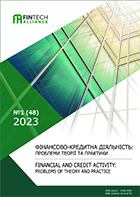
Lyeonov S. Forecasting the risk of money laundering through financial intermediaries [Електронний ресурс] / S. Lyeonov, O. Kuzmenko, V. Bozhenko, M. Mursalov, Z. Zeynalov, A. Huseynova // Фінансово-кредитна діяльність: проблеми теорії та практики. - 2020. - № 4. - С. 191–201. - Режим доступу: http://nbuv.gov.ua/UJRN/Fkd_2020_4_22 Збільшення обсягів міжнародної торгівлі, активний розвиток інтеграційний і конвергентних процесів на світовому фінансовому ринку, стрімке впровадження цифрових технологій у різні сфери життя, а також зростання масштабів транскордонної організованої злочинності призвели до нарощення обсягів тіньової економічної діяльності та вдосконалення форм і методів відмивання незаконно отриманих коштів. За цих умов украй важливим є адекватна оцінка ризику легалізації кримінальних коштів за посередництва фінансових установ і визначення його динаміки в майбутньому. Мета дослідження - побудова прогнозної нейромережевої моделі для визначення динаміки ризику використання банківських установ для легалізації кримінальних коштів. Методичним інструментарієм дослідження стали методи експоненційного згладжування (з використанням експоненційного тренду, лінійної моделі Хольта та затухаючого тренду), моделі штучної нейронної мережі (НМ) (багатошаровий персептрону MLP-архітектури з використанням алгоритму BFGS, радіальна базисна функція RBF-архітектури з використанням алгоритму RBFT). Об'єктом дослідження обрано 20 банків України. Побудову прогнозної моделі здійснено в такій логічній послідовності: визначено прогнозні значення релевантних факторів впливу на ризик залучення фінансової установи в тіньові операції; навчання НМ за сформованою вибіркою показників; прогнозування ризику використання фінансових посередників України для легалізації кримінальних доходів на період 2020 - 2025 рр. на базі побудованих НМ. Проведені розрахунки засвідчили, що до 2025 р. лише 40 % аналізованих банків України зможуть зменшити їх участь у легалізації незаконно отриманих коштів. Якість побудованих прогнозів є високою, оскільки коефіцієнт ефективності для більшості побудованих моделей коливається в межах 0,9 - 1,0. Результати дослідження можуть бути корисними для менеджменту фінансових установ із метою вжиття комплексу превентивних заходів у системі внутрішнього фінансового моніторингу, а також науковцям, які займаються цією проблематикою. | ||
| 7. | 
Artyukhov A. Ye. An integrated method for evaluating the quality of education and university performance [Електронний ресурс] / A. Ye. Artyukhov, T. A. Vasylieva, S. V. Lyeonov // Naukovyi visnyk Natsionalnoho Hirnychoho Universytetu. - 2021. - № 3. - С. 148-154. - Режим доступу: http://nbuv.gov.ua/UJRN/Nvngu_2021_3_25 Purpose. To create an integrated methodology for assessing educational and scientific activities of higher education institutions (HEI) following the recommendations of international ranking agencies and specific indicators that consider the institution's position at the national level. Methodology. The combined method of evaluation of the HEI activity is applied. Some evaluation indicators are inherent in the HEI (in whole or in part). Others have a specific numerical value. The calculation of the final ranking indicator is based on comparing universities according to the indicators from the methodology (ranking positions in the world educational and scientific space, education quality indicators, financial indicators, and quality of scientific activity) with the reference university, which has the best result for each indicator. Findings. An integrated methodology algorithm for assessing the educational and scientific activities of the HEI is presented and recommendations are given for the use of each of the indicators depending on the peculiarities of the ranking (for example, general ranking or ranking by direction). Originality. An integrated method of external evaluation of educational and scientific activities is proposed, considering both well-known indicators of world ranking agencies and specific (different from world ranking indicators) indicators for assessing universities' activities at the national level. Practical value. The method allows determining some economic indicators of the dynamics (positive or negative) of university development and finding "bottlenecks" in the implementation of specific activities in the institution's educational and scientific activities. The methodology considers the actual educational activities (training of higher education institutions at all levels). It also allows us to assess the success of free economics in implementing scientific activities as a significant factor in creating new knowledge and improving educational services quality. | ||
| 8. | 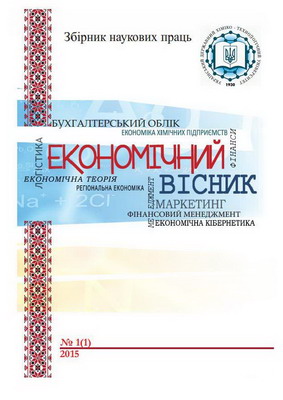
Artyukhov A. E. Incentive system and motivation of employees to scientific activity: economic aspects at the university and state level [Електронний ресурс] / A. E. Artyukhov, T. A. Vasylieva, I. I. Volk, S. V. Lyeonov // Економічний вісник ДВНЗ "Український державний хіміко-технологічний університет". - 2021. - № 2. - С. 29-36. - Режим доступу: http://nbuv.gov.ua/UJRN/evdvnz_2021_2_7 | ||
| 9. | 
Lyeonov S. Creation of users’ screen forms of the financial monitoring automated information system for economic development and economic growth [Електронний ресурс] / S. Lyeonov, H. Yarovenko, V. Koibichuk, A. Boyko, Yu. Kravchyk // Фінансово-кредитна діяльність: проблеми теорії та практики. - 2021. - № 6. - С. 212-222. - Режим доступу: http://nbuv.gov.ua/UJRN/Fkd_2021_6_22 | ||
| 10. | 
Lyeonov S. The Impact of Entrepreneurship Financial Opportunities and Business Environment on the Country’s Innovation Development and National Wealth [Електронний ресурс] / S. Lyeonov, Ya. Samusevych, A. Gurmach, V. Juscius // Marketing and management of innovations. - 2022. - № 4. - С. 109-119. - Режим доступу: http://nbuv.gov.ua/UJRN/Mimi_2022_4_13 | ||
| 11. | 
Tiutiunyk I. V. The impact of economic shadowing on social development: challenges for macroeconomic stability [Електронний ресурс] / I. V. Tiutiunyk, A. O. Zolkover, S. V. Lyeonov, L. B. Ryabushka // Naukovyi visnyk Natsionalnoho Hirnychoho Universytetu. - 2022. - № 1. - С. 183-191. - Режим доступу: http://nbuv.gov.ua/UJRN/Nvngu_2022_1_31 Purpose. To develop a model of investigating the link between the level of shadow economy and indicators of social development of the country. Methodology. The study of the relationship between the analyzed indicators was conducted using general and special research methods. The established hypotheses were tested using VAR/VEC modeling. Dickey - Fuller test, the Phillips - Perron test, Joansen test are used in the work. Findings. The paper identifies the risks of the shadow economy for social indicators of macroeconomic stability. Based on the analysis of the country's social development indicators, indicators were identified that are most sensitive to changes in the level of the shadow economy which are: Gini coefficient, average income ratio of 10 % of the richest to 10 % of the poorest, average income ratio of 20 % of the richest to 20 % of the poorest sections of the population, Human Development Index, gross average wage. The EU countries and Ukraine are identified as the statistical base of the study and the assessment period is 2005 - 2020. The results of modeling proved the relationship between the level of shadow economy and indicator of social development. Originality. The approach to assessing the relationship between the level of the shadow economy and indicators of social development of the country by considering the indicators that most fully characterize the level of social protection and material well-being of the population has been improved. Practical value. The scientific contribution of the paper is that existing research on the impact of shadow economy on the level of social development of the countries remains fragmented, as well as studies assessing its effect on the macroeconomic stability. The impulse response function constructed by the authors may provide some insight into better understanding of the indicators of social development, the most sensitive to the shadow economy shocks. The results of estimation can be used for practical or scientific purposes. | ||
| 12. | 
Bozhenko V. V. Identification of determinants of corruption in government: a mar-spline approach [Електронний ресурс] / V. V. Bozhenko, S. V. Lyeonov, Ev. A. Polishchuk, A. O. Boyko, N. O. Artyukhova // Naukovyi visnyk Natsionalnoho Hirnychoho Universytetu. - 2022. - № 6. - С. 176-180. - Режим доступу: http://nbuv.gov.ua/UJRN/Nvngu_2022_6_29 Purpose. Development of a scientific and methodological approach to the identification of the most impactful determinants on corruption using multivariate adaptive regression splines. Methodology. Methodological tools of the research methods are comparison, grouping, bibliometric analysis, and multivariate adaptive regression splines in the form of piecewise linear functions. Findings. Systematization of the literary sources and approaches for factors influencing corruption indicates that most empirical studies are based on using panel data. Panel data allows you to insert general patterns, but does not consider the patterns of the national economy. For the study on corruption in Ukraine, 15 influencing factors were selected, characterizing the institutional, economic and social environment. Based on the constructed MAR Spline models, three regression equations were obtained that describe the linear dependence of the level of corruption in governance on the selected factors. The paper found that the relevant factors influencing corruption in Ukraine are: tax burden, general government final consumption expenditure, average monthly wage in Governance and rule of law. Originality. The proposed approach makes it possible to determine the dynamics of the degree of factor influence on the level of corruption in the country. The paper defines the threshold values of statistically significant indicators at which the maximum degree of correlation with the corruption perception index is achieved. Practical value. The regularities between the level of corruption and economic, institutional and social factors revealed by the research results can be used in the development of tools to fight corruption in Ukraine. The formation of an effective anti-corruption system will strengthen financial stability in the country and increase the level of public trust in society. | ||
 |
| Відділ наукової організації електронних інформаційних ресурсів |
 Пам`ятка користувача Пам`ятка користувача |